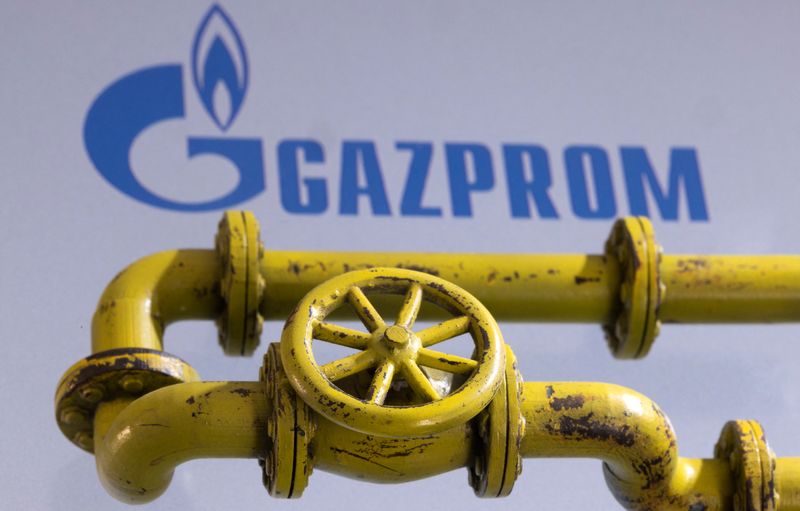By Geoffrey Smith
Investing.com -- European natural gas prices surged over 20% on Wednesday as Russian monopoly Gazprom (MCX:GAZP) cut supplies to its biggest customer, Germany, for the second day running.
The front-month TTF contract in the Netherlands, which serves as a benchmark for north-west Europe, closed at 118.25 euros a megawatt-hour, up nearly 22% from Tuesday’s close.
Gazprom said it would cut flows through the Nord Stream 1 pipeline to 67 million cubic meters a day from Thursday, having already announced a first cut from 167 mcm to 100 mcm on Tuesday.
The company attributed its step to the delayed return of equipment for the Portovaya compressor station, which had been sent abroad for maintenance by its maker, Siemens.
Siemens had shipped the equipment to Canada, which is now refusing to return it due to its own sanctions on Russia, imposed after the Kremlin’s invasion of Ukraine in February.
German Vice-Chancellor Robert Habeck described Gazprom’s move as ‘politically motivated.'
“It is obviously a strategy to unsettle and drive up prices," Habeck was quoted by Deutsche Welle as saying.
“We can currently buy the necessary quantities from the market, albeit at higher prices,” he added.
Germany has already activated the first phase of a three-part plan that could ultimately lead to gas rationing across the country, a measure that would have far reaching consequences for the engine room of the Eurozone economy.
The move is the latest in a series of actions by Gazprom that have squeezed supplies to Europe, which has itself tried to exert economic pressure on Russia by phasing in a ban on oil and fuel imports by the end of the year.
Gazprom has already cut off supplies to the biggest gas distributors in the Netherlands, Denmark and others due to their refusal to comply with a unilateral rewriting of their supply contract forcing them to pay in rubles.
European natural gas prices have surged this year as buyers have had to quickly find alternative suppliers to Russia. That has driven up the price of seaborne liquefied natural gas from the U.S., contributing much to the rise in U.S. prices in recent weeks. U.S. natgas futures hit their highest since 2008 earlier this month.
